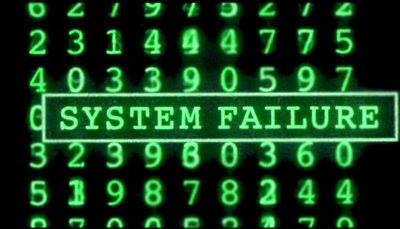In the industrial age of the mid-20th century, tycoons became tycoons because they saw the big picture and could assess opportunities and risks. During World War II when Sweden stayed neutral, the industrial magnates and brothers Marcus and Jacob Wallenberg ran their businesses while also acting as official trade emissaries. The brothers were well-traveled and understood the fundamental dynamics of world trade and industry. Jacob negotiated with the Germans and Marcus with the Allies.
Continue reading Russia’s Industry and Economy Can’t Sustain the War Effort
Cyber in Arctic Warfare
The change from a focus on counter-insurgency to near-peer and peer conflicts also introduce the likelihood, if there is a conflict, of a fight in colder and frigid conditions. The weather conditions in Korea and Eastern Europe are harsh in wintertime, with increasing challenges the further north the engagement is taking place. I have personal experience facing Arctic conditions as a former Swedish reserve officer and light infantry company commander.
In traditional war, theaters have the threat to your existence line up as enemy, logistics, and climate. In a polar climate, it is reversed – climate, logistics, and the enemy.
An enemy will engage you and seek to take you on different occasions meanwhile the climate will be ever-present. The battle for your physical survival in staying warm, eating, and seeking rest can create unit fatigue and lower the ability to fight within days, even for trained and able troops. The easiest way to envision how three feet of snow affects you is to think about your mobility walking in water up to your hip, so either you ski or use low-ground pressure and wide-tracked vehicles such as specialized Small Unit Support Vehicle (SUSV). The climate and the snow depth affect equipment. Lethality in your regular weapons is lowered. Gunfire accuracy decreases as charges burn slower in an arctic subzero-degree environment. Mortar rounds are less effective than under normal conditions when the snow captures shrapnel. Any heat from weapons, vehicles, or your body will melt the snow and then freeze to ice. If not cleaned, weapons will jam. In a near-peer or peer conflict, the time units are engaged longer, and the exposure to the climate can last months. I say this to set the stage. Arctic warfare occurs in an environment that often lacks roads, infrastructure, minimal logistics, and snow and ice blocking mobility.
The climate affects you and the enemy; once you are comfortable in this environment, you can work on the enemy’s discomfort.
Russia’s Imperial Farce
Russia has moved from Soviet-style warfare to self-pitying introspection, but it remains dangerous and must be defeated.
Russia is going to war with Ukraine to defend the Motherland from gay parades. Russia is defending against an onslaught of transgender NATO satanist mercenaries of mixed ethnicity. Russian state television discusses whether it’s best to bomb Berlin first, or more sensible to start with London and then move on to eradicate the rest of Western Europe, thus removing the sources of support for the queer-Nazi government in Kyiv.
Continue reading Russia’s Imperial Farce
The War in Ukraine – Russian officer losses reach strategic impact
For a mobilization effort to create new units that can enter the war and successfully fight, not only are arms, equipment, and soldiers are needed, but a cadre of available experience tactical leaders that can train, forge cohesion, and lead the new units into combat. After over ten months of war in Ukraine, Russian ground forces lost a significant portion of their able tactical leaders – the ground-war company commanders. The company commanders lead the fight at the forward platoons, are close to contact with the enemy, and must be in the forefront to maintain the initiative. The Russian junior officers have been more exposed due to the low motivation of the Russian troops, forcing the officers to be at the edge of the front and lead by example in urban combat, with heightened risks. The Russian mobilization efforts’ strategic impact is doomed to fail as the Russian army runs out of experienced tactical leaders – the company commanders.
Continue reading The War in Ukraine – Russian officer losses reach strategic impact
The Lost Will to Fight
More than six months of fighting have hit the Russian army where it hurts, sapping its will to continue Vladimir Putin’s adventure.
//The article was written before the Russian mobilization order 20 September 2022, but it is unlikely that the newly mobilized would have any higher motivation than the existing Russian force – at least after experienced the operational realities//
Russia’s failed assault on Hostomel airfield at the outset of all-out war on February 24, when it tried to use air-assault troops to decapitate the Ukrainian government in nearby Kyiv, left a clear sense that military operations were not going the way it had planned.
The West Has Forgotten How to Keep Secrets
My CEPA article about the intelligence vulnerability open access, open government, and open data can create if left unaddressed and not in sync with national security – The West Has Forgotten How to Keep Secrets.
From the text:
“But OSINT, like all other intelligence, cuts both ways — we look at the Russians, and the Russians look at us. But their interest is almost certainly in freely available material that’s far from televisual — the information a Russian war planner can now use from European Union (EU) states goes far, far beyond what Europe’s well-motivated but slightly innocent data-producing agencies likely realize.
Seen alone, the data from environmental and building permits, road maintenance, forestry data on terrain obstacles, and agricultural data on ground water saturation are innocent. But when combined as aggregated intelligence, it is powerful and can be deeply damaging to Western countries.
Democracy dies in the dark, and transparency supports democratic governance. The EU and its member states have legally binding comprehensive initiatives to release data and information from all levels of government in pursuit of democratic accountability. This increasing European release of data — and the subsequent addition to piles of open-source intelligence — is becoming a real concern.
I firmly believe we underestimate the significance of the available information — which our enemies recognize — and that a potential adversary can easily acquire.”
Bye bye Vladivostok! The Chinese claim of the Russian Far East.
Russia’s decline is visible to everyone, including China, despite its grandiose claims and attempts to bury history.
In 1997, the First Opium War officially ended with the British administration and forces leaving Hong Kong. The Second Opium War is still ongoing, since the Russian Federation continues to occupy the Amur region and Outer Manchuria. This land area was extorted from China in 1860 during the Second Opium War, under threat to set Beijing ablaze.
Surely no one these days thinks of returning Vladivostok to China?
Continue reading Bye bye Vladivostok! The Chinese claim of the Russian Far East.
Defending NATO in the High North
Defending NATO in the High North
The invitation and entry of Sweden and Finland into the NATO alliance radically improve the Alliance’s ability to defend the High North. Sweden and Finland will provide NATO with operational depth and logistic routes that the Alliance lacked earlier. With Sweden and Finland outside of the Alliance, the route to move NATO reinforcement to Finnmark, the Northernmost part of Norway, follows the single coastal road E6 along the Norwegian shoreland. Any Russian stand-off weaponry, or special forces, could, with limited engagements, strike the E6 route and cut off Northern Norway, leaving it open to a rapid Russian advance.
This lack of operational depth and NATO’s reliance on a single route to reinforce the High North has been an opportunity for a Russian fait accompli attack early in an evolving conflict with NATO.
Drones Will not Liberate Ukraine – but Tanks Will
My CEPA article “Drones Will not Liberate Ukraine – but Tanks Will” – see full text.
From the article:
“Drones have changed the battlefield, providing additional situation awareness and the ability to strike targets, but their high success rates in the Ukraine war is a result of unique conditions unlikely to be replicated elsewhere.
Unmanned combat aerial vehicles (UCAV) such as the Turkish Bayraktar TB2 have been successful in the Russian-Ukrainian war and helped prevent the Ukrainian defenses from crumbling under the initial Russian onslaught. The absence of short-range air defenses (SHORAD) in the initial months of the war gave drones free range.
But four months later, man-portable air-defense systems (MANPADS) like the US-manufactured Stinger, its Russian counterpart the SA-25, and other air defense systems, are bringing down drones.”
Air defenses can as easily target larger, slow-moving drones such as TB2 Bayraktar just like other slow moving aerial targets such as helicopters and transport aircraft.
A Potemkin Military? Russia’s Over-Estimated Legions
My CEPA article about the overestimation of the Russian abilities – see full text.
From the text:
“Seen from the West, the Red Army was an able, well-integrated, and competent opponent able to rapidly launch joint offensive operations with no or little warning. Every Western soldier learned how the Soviets would fight by watching Red Army propaganda movies which projected a fast-moving armored onslaught that would either overrun any defense, or destroy the defending forces after encirclement.
The West was taken in by the Communist propaganda machine because these were the only movies showing the Soviet capabilities. We believed that Russian armored divisions would sweep across the open landscape, cross rivers and streams with ease when engineers unfolded pontoon bridges as the spearhead arrived, all surrounded by a symphony of well-orchestrated artillery and rocket fire and framed by the smoke trails of SU-24 ground attack aircraft in joint operations.
We looked at the Soviet, and now Russian, order of battle and drew mathematical inference – and ended up being wrong.
We missed discipline, leadership, coordination, trust, and the effects on troops and hardware, living in a culture of corruption and theft for decades. These factors could not be quantified and never made it to the model. Instead of passing the Portuguese border on day 75 of the assault, following the original Seven Day to Rhine model, the Russians in reality barely made it to the next postal code in Donbas.”
CEPA Article: Russia Won’t Play the Cyber Card, Yet
My article from CEPA (Center for European Policy Analysis). Read the full text following this link.
In reality, the absence of cyber-attacks beyond Ukraine indicates a very rational Russian fear of disclosing and compromising capabilities beyond its own. That is the good news. The bad news is that the absence of a cyber-offensive does not mean these advanced capabilities do not exist.
From the text.
“The recent cyberattacks in Ukraine have been unsophisticated and have
had close to no strategic impact. The distributed denial-of-service (DDoS) cyber-attacks are low-end efforts, a nuisance that most corporations already have systems to mitigate. Such DDoS attacks will not bring down a country or force it to submit to foreign will. These are very significantly different from advanced offensive cyber weapons. Top-of-the-range cyber weapons are designed to destroy, degrade, and disrupt systems, eradicate trust and pollute data integrity. DDoS and website defacements do not even come close in their effects.
A Russian cyber-offensive would showcase its full range of advanced offensive cyber capabilities against Ukraine, along with its tactics, techniques, and procedures (TTP), which would then be compromised. NATO and other neighboring nations, including China and Iran, would know the extent of Russian capabilities and have effective insights into Russia’s modus operandi.
From a Russian point of view, if a potential adversary understood its TTP, strategic surprise would evaporate, and the Russian cyber force would lose the initiative in a more strategically significant future conflict.
Understanding the Russian point of view is essential because it is the Russians who conduct their offensive actions. This might sound like stating the obvious, but currently, the prevailing conventional wisdom is a Western think-tank-driven context, which in my opinion, is inaccurate. There is nothing for the Russians to strategically gain by unleashing their full, advanced cyber arsenal against Ukraine or NATO at this juncture. In an open conflict between Russia and NATO, the Kremlin’s calculation would be different and might well justify the use of advanced cyber capabilities.
In reality, the absence of cyber-attacks beyond Ukraine indicates a very rational Russian fear of disclosing and compromising capabilities beyond its own. That is the good news. The bad news is that the absence of a cyber-offensive does not mean these advanced capabilities do not exist.”
Jan Kallberg
CEPA article: A troubling silence on Prisoners of War
My CEPA article from March 22 can be read following this link.
My article for 19fortyifive: “Free War: A Strategy For Ukraine To Resist Russia’s Brutal Invasion Of Ukraine?”
I wrote an article for the national security web-based venue 19fortyfive that addresses resistance operations seen in the light of the Swedish Fria Kriget (Eng.: Free War) concept.
The full text can be found here.
(Picture UK MOD)
Article: Too Late for Russia to Stop the Foreign Volunteer Army
My article “Too Late for Russia to Stop the Foreign Volunteer Army” was published by the Center for European Policy Analysis. A short quote below,
Any Ukrainian who sees French, British, American, Spanish, Brazilian, from wherever they come, volunteers joining their resistance will solidify the notion that the war is not between Ukraine and Russia; but between good and evil. Predictably enough, Putin, his commanders, and propagandists are troubled by the prospect of thousands of volunteers supporting the Ukrainian narrative, their cause, and strengthening the Ukrainian will to endure.
Ukraine: Russia will not waste offensive cyber weapons
An extract from my latest article at CyberWire – read the full article at CyberWire.
—
When Russia’s strategic calculus would dictate major cyber attacks.
Russia will use advanced strategic cyber at well-defined critical junctures. For example, as a conflict in Europe unfolded and dragged in NATO, Russian forces would seek to delay the entry of major US forces through cyber attacks against railways, ports, and electric facilities along the route to the port of embarkation. If US forces can be delayed by one week, that is one week of a prolonged time window in Europe before the main US force arrived, and would enable the submarines of the Northern Fleet to be positioned in the Atlantic. Strategic cyber support strategic intent and actions.
All cyber-attacks are not the same, and just because an attack originates from Russia doesn’t mean it is directed by strategic intent.
Naturally, the Russian regime would allow cyber vandalism and cybercrime against the West to run rampant because these are ways of striking the adversary. But these low-end activities do not represent the Russian military complex’s cyber capabilities, nor do they reflect the Russian leadership’s strategic intent.
The recent cyberattacks in Ukraine have been unsophisticated and have had close to no strategic impact. The distributed denial-of-service (DDoS) cyber-attacks are low-end efforts, a nuisance that most corporations already have systems to mitigate. Such DDoS attacks will not bring down a country or force it to submit to foreign will. Such low-end attacks don’t represent advanced offensive cyber weapons: the DDoS attacks are limited impact cyber vandalism. Advanced offensive cyber weapons destroy, degrade, and disrupt systems, eradicate trust and pollute data integrity. DDoS and website defacements are not even close to this in their effects. By making DDoS attacks, whether it’s the state that carried them out or a group of college students in support of Kremlin policy, Russia has not shown the extent of its offensive cyber capability.
The invasion of Ukraine is not the major peer-to-peer conflict that is the central Russian concern. The Russians have tailored their advanced cyber capabilities to directly impact a more significant geopolitical conflict, one with NATO or China. Creating a national offensive cyber force is a decades-long investment in training, toolmaking, reconnaissance of possible avenues of approach, and detection of vulnerabilities. If Russia showcased its full range of advanced offensive cyber capabilities against Ukraine, the Russian tactics, techniques, and procedures (TTP) would be compromised. NATO and other neighboring nations, including China and Iran, would know the extent of Russian capabilities and have effective insight into Russia’s modus operandi.
From a Russian point of view, if a potential adversary understood Russian offensive cyber operations’ tactics, techniques, and procedures, strategic surprise would evaporate, and the Russian cyber force would lose the initiative in a more strategically significant future conflict.
Understanding the Russian point of view is essential, because it is the Russians who conduct their offensive actions. This might sound like stating the obvious, but currently, the prevailing conventional wisdom is a Western think-tank-driven context, which in my opinion, is inaccurate. There is nothing for the Russians to strategically gain by unleashing their full advanced cyber arsenal against Ukraine or NATO at this juncture. In an open conflict between Russia and NATO the Russian calculation would be different and justify use of advanced cyber capabilities.
End of abstract – read the full article at CyberWire.











